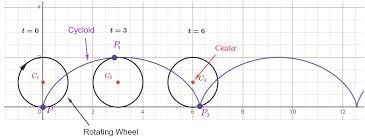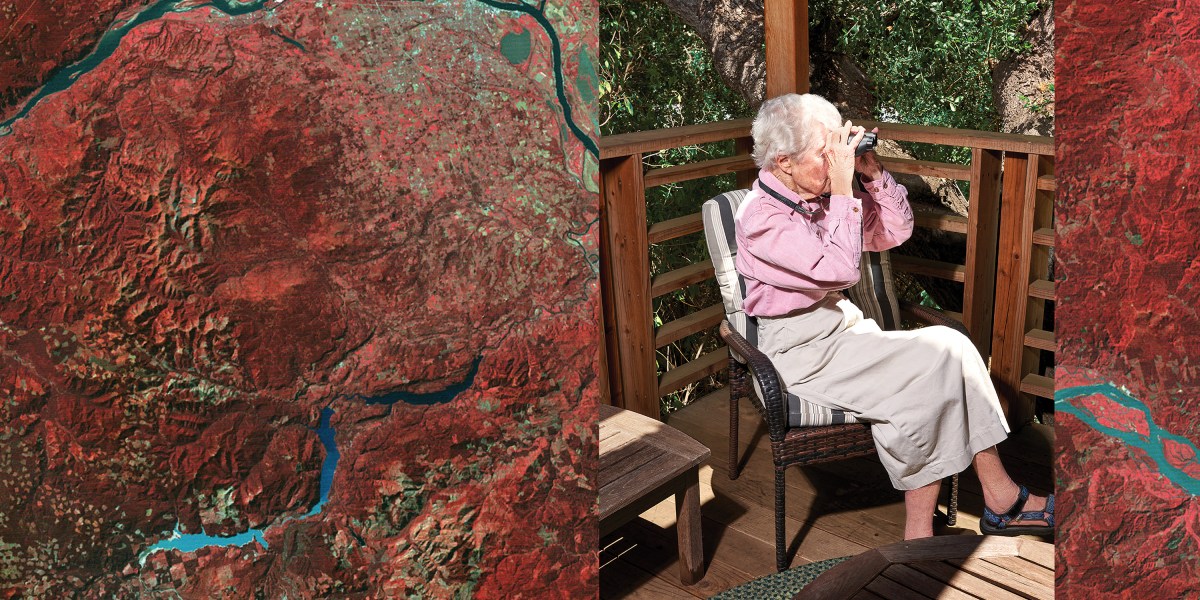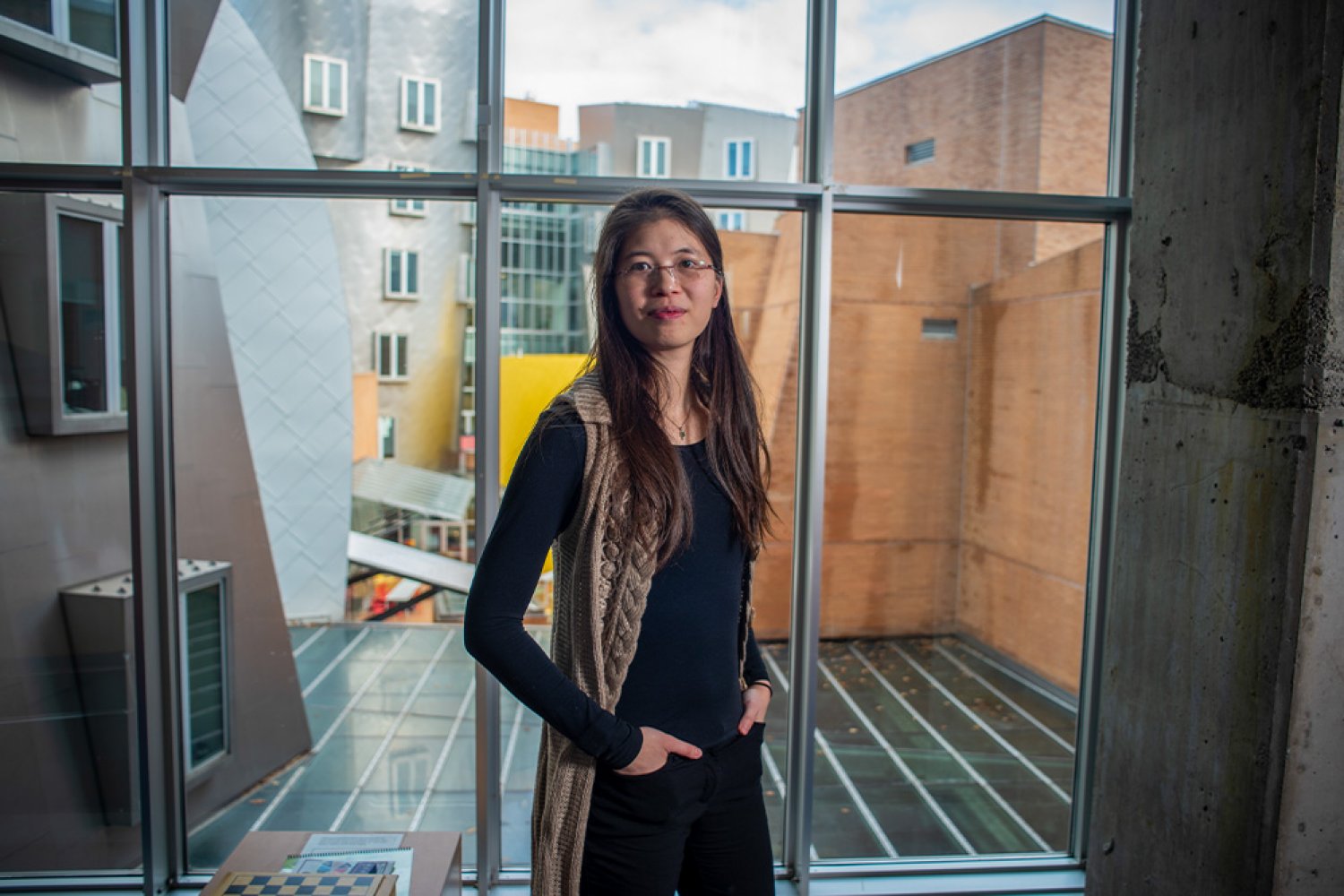You are using an out of date browser. It may not display this or other websites correctly.
You should upgrade or use an alternative browser.
You should upgrade or use an alternative browser.
The STEM thread
- Thread starter TipRoast
- Start date
View: https://youtu.be/yIdigLW07xY
I've always thought the M in STEM doesn't get enough respect.
And this video is one of the reasons why.

More math...

 www.nytimes.com
www.nytimes.com

Opinion | The Wondrous Connections Between Mathematics and Literature (Published 2023)
Understanding the often-overlooked links between math and literature can enhance your appreciation of both.
can't read without subscription.More math...

Opinion | The Wondrous Connections Between Mathematics and Literature (Published 2023)
Understanding the often-overlooked links between math and literature can enhance your appreciation of both.www.nytimes.com
Yes, I know there are only a few here that can see NYT articles. But some of those few do look at this thread every now and then.can't read without subscription.
Quick synopsis: the article is a guest essay by British mathematician Sarah Hart, and she relates a story about being inspired to read Moby-Dick because she heard that Melville referenced "cycloids" in the narrative. That led her to discover other references to mathematics by other well-known figures of literature (e.g. Tolstoy, James Joyce, Arthur Conan Doyle).

aloyouis
at least generally aware
By Sarah Hartcan't read without subscription.
A British mathematician and the author of “Once Upon a Prime: The Wondrous Connections Between Mathematics and Literature.”
“Call me Ishmael.” This has to be one of the most famous opening sentences in all of literature, and I’m embarrassed to say that — until quite recently — I didn’t get beyond it.
“Moby-Dick” was, for me, one of those books that languished in the guilt-inducing category of “things you should have read a long time ago,” and I just never got around to it. Plus, I am a mathematician. And despite my interest in literature, my intellectual priorities did not include 400-page novels about whales — or so I thought.
That all changed one day when I overheard a mathematician friend mention that “Moby-Dick” contains a reference to cycloids.
Cycloids are among the most beautiful mathematical curves in existence — the French mathematician Blaise Pascal found them so distractingly fascinating that he claimed merely thinking about them could relieve the pain of a bad toothache — but applications to whaling are not usually listed on their résumé.
Intrigued, I finally read “Moby-Dick,” and was delighted to find that it abounds with mathematical metaphors. I realized further it’s not just Herman Melville; Leo Tolstoy writes about calculus, James Joyce about geometry. Fractal structure underlies Michael Crichton’s “Jurassic Park” and algebraic principles govern various forms of poetry. We mathematicians even appear in work by authors as disparate as Arthur Conan Doyle and Chimamanda Ngozi Adichie.
There have been occasional academic studies on mathematical aspects of specific genres and authors. But the more holistic connections between mathematics and literature have not received the attention they deserve.
In fact, they are often pitted against each other. In the British education system in recent decades, students are often forced to choose between studying eithermath and science or the humanities. I recall that at the end of my very last English class at school, in 1991, the teacher gave me a lovely handwritten note with a long list of books she thought I might like, saying, “Sorry to lose you to the lab.”
I was sorry to be considered lost, too. But I wasn’t lost. I love language; I love the way words fit together; I love the way that fiction — like mathematics — can create, play with and test the limits of imaginary worlds. I went off to Oxford to study mathematics, very happy to be living one street away from the pub where my childhood literary heroes C.S. Lewis and J.R.R. Tolkien had met each week to discuss their work.
The idea that one would have to choose between mathematics and literature is, I think, something of a tragedy — not only because the two fields are inextricably, and fundamentally, linked, but also because understanding these links can enhance your enjoyment of both.
The perceived boundary between math and literature is actually a very recent idea. For most of recorded history, mathematics was part of every educated person’s cultural awareness.
Plato’s “Republic” put forward the ideal curriculum of arts to be studied, which medieval authors split into the trivium (grammar, rhetoric, logic) and the quadrivium (arithmetic, music, geometry, astronomy). Together, these are the essential liberal arts. Indeed, mathematical references in literary works go back at least as far back as Aristophanes’ “The Birds,” first performed in 414 B.C.
The 11th-century Persian scholar Omar Khayyám, to whom the poetry collection known as the “Rubaiyat” is attributed (modern scholars believe it to be the work of several authors), was also a mathematician, and created beautiful geometric solutions to mathematical problems whose full algebraic solutions would not be found for another 400 years. In the 14th century, Chaucer wrote both “The Canterbury Tales” and a treatise on the astrolabe. There are innumerable such examples, not least that of Lewis Carroll, who, of course, was a mathematician first and an author second.
There is a deeper reason we find mathematics at the heart of literature. The universe is full of underlying structure, pattern and regularity, and mathematics is the best tool we have for understanding it — that’s why mathematics is often called the language of the universe, and why it is so vital to science. Since we humans are part of the universe, it is only natural that our forms of creative expression, literature among them, will also manifest an inclination for pattern and structure.
Good mathematics, like good writing, involves an inherent appreciation of structure, rhythm and pattern. That feeling we get when we read a great novel or a perfect sonnet — that here is a beautiful thing, with all the component parts fitting together perfectly in a harmonious whole — is the same feeling a mathematician experiences when reading a beautiful proof.
The mathematician G.H. Hardy wrote that “a mathematician, like a painter or poet, is a maker of patterns. … The mathematician’s patterns, like the painter’s or the poet’s, must be beautiful; the ideas, like the colors or the words, must fit together in a harmonious way. Beauty is the first test: There is no permanent place in the world for ugly mathematics.”
As a mathematician, it’s been one of the great joys of my career to uncover and explore these connections.
That fitting together, that structure, is probably most visible in poetry, but all writing has structure. Letters form words, words form sentences, sentences form paragraphs. Just like the point, line, plane hierarchy of geometry, constraints, or rules, can be imposed at any stage — it’s not whether to have a structure, it’s what structure to choose.
part 2 below
aloyouis
at least generally aware
The French author Georges Perec wrote a novel (“La Disparition,” or “A Void” in the English translation) without once using the letter E. Eleanor Catton’s Booker Prize-winning “The Luminaries” imposes a precise numerical rule on its chapters, each of which is half the length of the last. In both cases, the mathematical constraint echoes and enforces the novel’s themes. The constraints we choose inspire us to create, to see what is possible — and it’s just the same in math.
It’s worth pointing out as well that the links between mathematics and literature do not run in just one direction. Mathematics itself has a rich heritage of linguistic creativity. Going back to early India, Sanskrit mathematics followed an oral tradition. Mathematical algorithms were encoded in poetry so that they could be passed on by word of mouth.
We think of mathematical concepts as relating to precise, fixed words: square, circle. But in the Sanskrit tradition, your words must fit into the meter of your poem. Number words, for example, can be replaced with words for relevant objects.
The number one can be represented by anything that is unique, like the moon or the earth, while “hand” can mean two, because we have two hands — but so can “black and white,” because that forms a pair. An expression like “three voids teeth” doesn’t mean a visit to the dentist, but that three zeros should follow the number of teeth we have: a poetic way to say 32,000. The huge array of different words and meanings lends a compelling richness to the mathematics.
Just as mathematics makes use of literary metaphors, literature abounds with ideas that a mathematically attuned eye can detect and explore. This adds an extra dimension to our appreciation of a work of fiction. Melville’s cycloid, for example, is a curious curve with many wonderful properties, but unlike curves such as the parabola and ellipse, you probably haven’t heard of it unless you are a mathematician.
That’s a real shame, because the properties of this curve are so beautiful that it was nicknamed “the Helen of geometry.” Making a cycloid is quite easy. Imagine a wheel rolling along a flat road. Now mark a point on the rim somehow, say, with a blob of paint. That blob will trace out a path in space as the wheel rolls, and this path is called a cycloid.
This is a fairly natural idea, but we don’t have evidence of its being studied until the 16th century, and things didn’t really heat up until the 17th and 18th centuries, when it seemed that everyone who was interested in mathematics had something to say. It was Galileo, for example, who came up with the name “cycloid”: He wrote that he had worked on cycloids for 50 years.
So the fact that the cycloid gets a mention not just in “Moby-Dick” but also in two great works of 18th-century literature, “Gulliver’s Travels” and “Tristram Shandy, again shows us mathematics in its rightful place — not “other” but part of intellectual life.
Great literature and great mathematics satisfy the same deep yearning in us: for beauty, for truth, for understanding. As the pioneering Russian mathematician Sofia Kovalevskaya wrote: “It is impossible to be a mathematician without being a poet in soul … the poet must see what others do not see, must see more deeply …. And the mathematician must do the same.”
By seeing mathematics and literature as part of the same quest — to understand the world and our place in it — we can add to our experience of both, and bring whole new layers of enjoyment to our favorite writing.
Sarah Hart is a British mathematician and the author of “Once Upon a Prime: The Wondrous Connections Between Mathematics and Literature.”
The Times is committed to publishing a diversity of letters to the editor. We’d like to hear what you think about this or any of our articles. Here are some tips. And here’s our email: letters@nytimes.com.
It’s worth pointing out as well that the links between mathematics and literature do not run in just one direction. Mathematics itself has a rich heritage of linguistic creativity. Going back to early India, Sanskrit mathematics followed an oral tradition. Mathematical algorithms were encoded in poetry so that they could be passed on by word of mouth.
We think of mathematical concepts as relating to precise, fixed words: square, circle. But in the Sanskrit tradition, your words must fit into the meter of your poem. Number words, for example, can be replaced with words for relevant objects.
The number one can be represented by anything that is unique, like the moon or the earth, while “hand” can mean two, because we have two hands — but so can “black and white,” because that forms a pair. An expression like “three voids teeth” doesn’t mean a visit to the dentist, but that three zeros should follow the number of teeth we have: a poetic way to say 32,000. The huge array of different words and meanings lends a compelling richness to the mathematics.
Just as mathematics makes use of literary metaphors, literature abounds with ideas that a mathematically attuned eye can detect and explore. This adds an extra dimension to our appreciation of a work of fiction. Melville’s cycloid, for example, is a curious curve with many wonderful properties, but unlike curves such as the parabola and ellipse, you probably haven’t heard of it unless you are a mathematician.
That’s a real shame, because the properties of this curve are so beautiful that it was nicknamed “the Helen of geometry.” Making a cycloid is quite easy. Imagine a wheel rolling along a flat road. Now mark a point on the rim somehow, say, with a blob of paint. That blob will trace out a path in space as the wheel rolls, and this path is called a cycloid.
This is a fairly natural idea, but we don’t have evidence of its being studied until the 16th century, and things didn’t really heat up until the 17th and 18th centuries, when it seemed that everyone who was interested in mathematics had something to say. It was Galileo, for example, who came up with the name “cycloid”: He wrote that he had worked on cycloids for 50 years.
So the fact that the cycloid gets a mention not just in “Moby-Dick” but also in two great works of 18th-century literature, “Gulliver’s Travels” and “Tristram Shandy, again shows us mathematics in its rightful place — not “other” but part of intellectual life.
Great literature and great mathematics satisfy the same deep yearning in us: for beauty, for truth, for understanding. As the pioneering Russian mathematician Sofia Kovalevskaya wrote: “It is impossible to be a mathematician without being a poet in soul … the poet must see what others do not see, must see more deeply …. And the mathematician must do the same.”
By seeing mathematics and literature as part of the same quest — to understand the world and our place in it — we can add to our experience of both, and bring whole new layers of enjoyment to our favorite writing.
Sarah Hart is a British mathematician and the author of “Once Upon a Prime: The Wondrous Connections Between Mathematics and Literature.”
The Times is committed to publishing a diversity of letters to the editor. We’d like to hear what you think about this or any of our articles. Here are some tips. And here’s our email: letters@nytimes.com.

Butterflies Inspire Creation of Lightest Paint in the World
As the result of a happy accident, scientists have created a sustainable paint that's lighter, longer-lasting and more cooling than traditional paint.
Plasmonic paint - this is some cool science.
And when the aliens show up, we'll be able to trade them our paint technology for their anti-gravity tech (as was done in Clifford Simak's The Big Front Yard).
Last edited:
Often in this thread we look at current and near-term future developments.
But it's good to sometimes appreciate the shoulders on which the current generations stands.
Virginia Norwood was the "mother of LandSat" and she passed earlier this week. Her obituary ran the other day in the NY Times (paywalled).

 www.nytimes.com
www.nytimes.com
However, much of the content in that piece came from this article:

 www.technologyreview.com
www.technologyreview.com
One of the critics of her work, after seeing the downloaded data, said this:
“I was so wrong about this,” admitted another, who’d been an MSS skeptic. “I’m not going to eat crow. Not big enough. I’m going to eat raven.”
But it's good to sometimes appreciate the shoulders on which the current generations stands.
Virginia Norwood was the "mother of LandSat" and she passed earlier this week. Her obituary ran the other day in the NY Times (paywalled).

Virginia Norwood, ‘Mother’ of Satellite Imaging Systems, Dies at 96
A pioneer in aerospace, she invented a technology that has enabled scientists to map and study the earth for more than 50 years.
However, much of the content in that piece came from this article:

The woman who brought us the world
A half-century ago, Virginia Tower Norwood ’47 invented the first multispectral scanner to image Earth from space. Landsat 1 and its successors have been scanning the planet continuously ever since.
One of the critics of her work, after seeing the downloaded data, said this:
“I was so wrong about this,” admitted another, who’d been an MSS skeptic. “I’m not going to eat crow. Not big enough. I’m going to eat raven.”
Last edited:

Industrializing 3D printing
VulcanForms, a startup founded by MIT Professor John Hart and Martin Feldmann MEng ’14, has created digital production systems based on a new kind of 3D printer to improve the throughput and quality of the machines.
Flagg the Wanderer
Mourning Algernon
12ft.io. You're welcome.can't read without subscription.
(Basically every paywall in existence has a non-paywall version that is sent to Google for SEO purposes. And if it doesn't, you probably didn't find it.)
nice,thanks!12ft.io. You're welcome.
(Basically every paywall in existence has a non-paywall version that is sent to Google for SEO purposes. And if it doesn't, you probably didn't find it.)
*edit-"12 ft has been disabled for this site"

Opinion | The Wondrous Connections Between Mathematics and Literature
Understanding the often-overlooked links between math and literature can enhance your appreciation of both.

The Biologist Blowing Our Minds
Michael Levin is uncovering the incredible, latent abilities of living things.
A couple of quick refreshers on the Periodic Table.

The curse of variety in transportation systems
MIT Assistant Professor Cathy Wu addresses traffic control problems by leveraging deep reinforcement learning.
- Joined
- Apr 9, 2005
- Messages
- 41,393
- Reaction score
- 13,169
- Points
- 113
- Age
- 76
Often in this thread we look at current and near-term future developments.
But it's good to sometimes appreciate the shoulders on which the current generations stands.
Virginia Norwood was the "mother of LandSat" and she passed earlier this week. Her obituary ran the other day in the NY Times (paywalled).

Virginia Norwood, ‘Mother’ of Satellite Imaging Systems, Dies at 96
A pioneer in aerospace, she invented a technology that has enabled scientists to map and study the earth for more than 50 years.www.nytimes.com
However, much of the content in that piece came from this article:

The woman who brought us the world
A half-century ago, Virginia Tower Norwood ’47 invented the first multispectral scanner to image Earth from space. Landsat 1 and its successors have been scanning the planet continuously ever since.www.technologyreview.com
One of the critics of her work, after seeing the downloaded data, said this:
“I was so wrong about this,” admitted another, who’d been an MSS skeptic. “I’m not going to eat crow. Not big enough. I’m going to eat raven.”
Halfway through the MIT article. Just a great bio. Obviously work at higher level, but reminds me of Hidden figures. a straightforward presentation of women refusing to be left out.Often in this thread we look at current and near-term future developments.
But it's good to sometimes appreciate the shoulders on which the current generations stands.
Virginia Norwood was the "mother of LandSat" and she passed earlier this week. Her obituary ran the other day in the NY Times (paywalled).

Virginia Norwood, ‘Mother’ of Satellite Imaging Systems, Dies at 96
A pioneer in aerospace, she invented a technology that has enabled scientists to map and study the earth for more than 50 years.www.nytimes.com
However, much of the content in that piece came from this article:

The woman who brought us the world
A half-century ago, Virginia Tower Norwood ’47 invented the first multispectral scanner to image Earth from space. Landsat 1 and its successors have been scanning the planet continuously ever since.www.technologyreview.com
One of the critics of her work, after seeing the downloaded data, said this:
“I was so wrong about this,” admitted another, who’d been an MSS skeptic. “I’m not going to eat crow. Not big enough. I’m going to eat raven.”
But in both the "women" aspect should be looked at as secondary. It's the great and essential work they did.
Cheers
- Joined
- Apr 9, 2005
- Messages
- 41,393
- Reaction score
- 13,169
- Points
- 113
- Age
- 76
A couple of quick refreshers on the Periodic Table.
back in the day, Lehrer was a big deal to young studentts. Loved his Brainiac stuff.

Behold Modular Forms, the ‘Fifth Fundamental Operation’ of Math | Quanta Magazine
Modular forms are one of the most beautiful and mysterious objects in mathematics. What are they?
“I look in a paper about black holes,” said Steve Kudla of the University of Toronto, “and I find modular forms that are friends of mine. But I don’t know why they’re there.”
Last edited:





